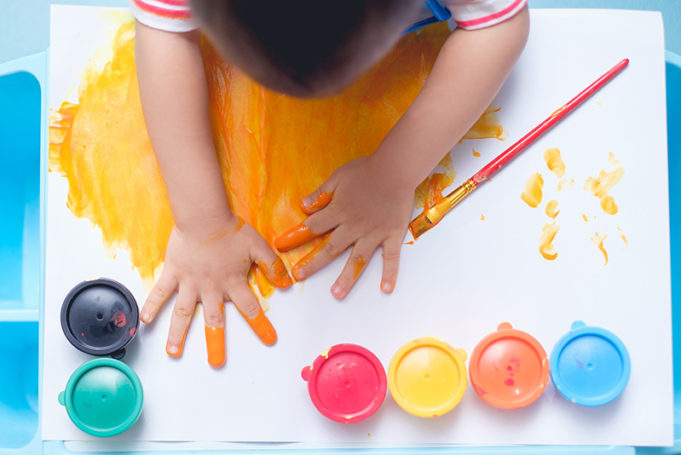18 Dec What is the Difference Between Fine and Gross Psychomotor Skills?

Even before they are born, babies are in constant movement; however, once they are born, it is your job to help them acquire the motor skills that will allow them to grow and become independent persons. This skill will help them to know the world and achieve their cognitive development.
Psychomotricity comes from two words: psycho that refers to the psyche (thought, emotion) and motricity that refers to mobility (movement and consequently, motor development). Psychomotricity is a discipline that studies and takes part in motor development linked with thoughts and emotions. Psychomotricity has two qualities: to generate movement and to do it at will.
Some activities strengthen these mobility skills; however, we must understand the difference between gross and fine psychomotricity:
Gross:
These are movements related to large muscles, such as legs and arms. Some of these activities include running, jumping, or throwing objects. They imply the capacity to control and balance the body.
Fine:
These acts involve hand and finger skills, such as grabbing or separating small objects.
Both psychomotor skills are essential. For gross motor skills, experts recommend carrying out more physical contact activities, while for fine motor skills, they recommend using tools —such as small toys— and carrying out meticulous activities. Hereunder, you can find some example of gross and fine motor skills:
Coloring and cutting: This is an unusual activity for the development of fine motor skills because children must stay within the silhouette when coloring an object. Children must be cautious when they cut an object, or they will ruin it. [FINE MOTOR SKILLS]
Building towers using blocks: Children love this game, and they can work their pincer grasp and eye-hand coordination. [FINE MOTOR SKILLS]
Painting: Whether children use a brush or their fingers, their manual dexterity is reinforcing. They have higher control of brushes as tools, and this activity enhances their sensitivity to textures. [FINE MOTOR SKILLS]
Free-style dancing: Join your child, moving your head, shoulders, knees, and hands dancing to any music genre; this drives gross motor skills. [GROSS MOTOR SKILLS]
Jumping: Whether using a mini trampoline or jumping from one place to the other, this activity strengthens muscles, sharpens coordination, and favors accuracy. [GROSS MOTOR SKILLS]
The way you engage with your children and the guidance that you give them is essential if the interactive game is to result in better motor skills.
#BOXIESTIP
Use the verses and songs of Bingo Box to sharpen your children’s coordination from the
first months. Additionally, you can strengthen motor skills with the help of boxes, which
can be piled up to form a high tower or put one inside the other to teach them the
dimension of things. You can also use the cards —which include a vocabulary that you can
check with your child— to play with them, putting them inside the boxes, this is an excellent exercise to develop fine motor skills.
SOURCES: Guía de estimulación y psicomotricidad en la educación inicial published by Consejo Nacional del fomento Educativo — Ministry of Education (SEP, Mexico); National Library of Medicine (USA); and Ministry of Health (Mexico).



Sorry, the comment form is closed at this time.